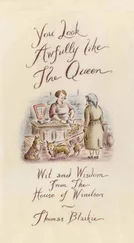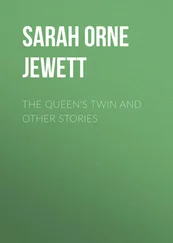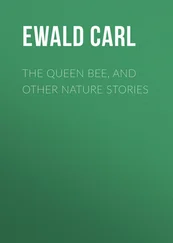The tour was exacting, psychologically as well as physically, for it aroused huge public curiosity. The Yorks’ itinerary involved going, via Panama, to Fiji and New Zealand before they reached Sydney. In Australia, a programme of visits took them to cities around the country, culminating in their arrival at Canberra for Bertie’s painfully rehearsed, much feared speech at the opening ceremony. During the ominous build-up, the Duke and Duchess were fêted at each stop. The local press eagerly examined every available detail of the lives of the previously little-known couple, who seemed to embody the mother country, for which sentimental and nostalgic feelings remained strong. As the tour progressed, fascination increased, especially for the most humanizing detail of all: the distant and as yet inarticulate Princess. ‘Wherever we go cheers are given for her as well,’ Bertie wrote to his mother, ‘& the children write to us about her.’ 25The newspapers dubbed her ‘Betty,’ and she became the tour’s unofficial mascot. The Duke and Duchess were soon besieged with questions about ‘the World’s Best Known Baby’. They were also loaded with gifts for her, each locality or association vying with its rivals to produce the most loving, ingenious and appropriate present. The Brownies of Auckland delivered a large doll, the children of Fremantle gave a miniature bed, together with a box of miniature clothes, the National Council of Women sent a gold porringer, and the Melbourne Arts and Crafts Society proudly proffered an Australian Noah’s Ark, complete with kangaroos, wallabies and other antipodean survivors of the Flood. In May 1927, it was estimated that three tons of toys had so far been presented for Betty, in absentia . The soldier who guarded them reputedly said there were more dolls in the collection than there were men in his regiment.
At home, however, Alla’s one-toy-at-a-time regime did not alter. The Princess’s first day without her parents was reported by the newspapers to be just like any other. Though it was the depth of winter, her nanny took her in a pram on a two-hour walk through Mayfair into Hyde Park, where she appeared perfectly content, fast asleep, and (suitably, for the granddaughter of a King-Emperor) clutching a golliwog under the covers. Supposedly, she ‘seemed to miss her mother’s regular morning visit to the nursery,’ though how anyone could tell was not revealed. 26
In February, the Alla establishment joined George V and Queen Mary at Buckingham Palace, and in April they followed the Court to Windsor, where the Princess spent her first birthday. The King and Queen enjoyed the idea of being in loco parentis (although it involved little contact with the child) and the Queen, particularly, took it very seriously. There was a daily ritual. Every afternoon, Alla would bring Princess Elizabeth down to her grandparents, ‘and the appearance at the door of a very little person in a white gown and fringed sash would be greeted by the Queen’s delighted cry of “Here comes the Bambino!”’ 27Photographs and written reports of the baby’s progress were sent to her parents. ‘She has 4 teeth now,’ the King told them in March, ‘which is quite good at eleven months, she is very happy and drives in a carriage every afternoon, which amuses her’. 28The Strathmores were able to tell of other accomplishments. During the last two months of the Yorks’ absence, the Princess stayed at St Paul’s Walden Bury. Here, Alla patiently taught her to enunciate the word ‘Mummy’. Since, however, there was nobody to whom the word could be accurately applied, she greeted everybody she came across, including family portraits, ‘with the salutation “Mummy, Mummy!”’ 29
As one writer observed later in the Princess’s childhood, ‘the parents who came back to her from the other end of the earth were strangers’. 30The Duke and Duchess returned in June after six months away, laden with toys, to greet a child they barely recognized, who was almost twice the age she had been when they departed. The reunion involved a poignant little ceremony in the Grand Hall at Buckingham Palace where the King and Queen and the Earl and Countess of Strathmore had assembled with the Household staff to provide a welcoming party. The Duchess, seeing the baby in its nurse’s arms, rushed forward, exclaiming ‘Oh you little darling’, and kissed and hugged it repeatedly. 31
Glad to be home, flushed with the unexpected triumph of their tour, and delighted to see their daughter, the Yorks were happy to relax for a while in London after such an arduous journey. However, they did not stay still for long. Within a few weeks, they had left the capital for the shooting season – the Duke to join the Duke and Duchess of Devonshire, the Duchess to visit her parents at Glamis. At first, Princess Elizabeth stayed in London, but after another short separation, she was dispatched to Scotland, where a mother-daughter relationship was re-established. ‘Elizabeth is learning to walk – very dangerous!’ wrote the Duchess of York at Glamis. In September 1927, the whole family joined the King and Queen at Balmoral. Then they returned south for the autumn months, in order to settle properly into their house in Piccadilly.
IN ALL ACCOUNTS of Princess Elizabeth as a child, legend and reality are inseparable. The observations of those with direct knowledge were fed, not just by what they saw, but also by popular beliefs and idealizations, colouring the way they treated her, and shaping the stories they passed on which, in turn, fed the myths. Two themes stand out in the early tales. According to the first, the Princess was an unusually bright and interesting child, as well as an exceptionally pleasing, generous, and sunny-natured one. According to the second, she was the essence of normality, and of a typically balanced yet fallible British girlhood. These contradictory versions – the ideal and the archetype – were held simultaneously and provided the frame on which every narrative of the Princess’s childhood was built, including the anecdotes of those close to her. They also shaped the way the world came to see her as an adult and as a monarch.
The manufacture of a publicly known personality for the Princess began with her appearance. The world, peering into the royal perambulator, detected an ethereal quality. After a visit to the Bruton Street nursery, one early eulogizer wrote that the infant Elizabeth had ‘the sweetest air of complete serenity about her. While we were talking, her nurse came in to fetch her, and the Duchess threw round her daughter’s head . . . a filmy veil of gossamer, from which she looked down out of her nurse’s arms smiling angelically at her mother, like a cherub out of a cloud’. 32
Yet if the Princess’s blond Botticelli curls, blue eyes and plump cheeks made it easy to cast her as an angel, it was important that she should also be seen as a mischievous one. After a Christmas party in 1927 for four hundred tenants on the Sandringham Estate, the press reported that the twenty-one-month-old apparition, wearing a white dress, silk socks and white shoes, suddenly materialized, standing upright on the table, ‘chattering and bombarding the guests with crackers handed to her by her mother.’ 33There was also another version of the image of a small person bombarding big ones with harmless objects. At 145 Piccadilly, the Princess would allegedly get a small toy, such as a teddy bear or a ball, and drop it from the nursery landing down the stairwell onto visitors as they arrived at the house. 34Other stories also emphasized that, for all the other-worldliness, the child was cheeringly imperfect. Ruth St Mawr, a friend of Lady Strathmore, told a story about taking tea at Glamis Castle when Princess Elizabeth, by then three, bounded in. ‘You can’t think how naughty I’ve been,’ declared the child. ‘Oh, so naughty, you don’t know.’ ‘Well then tell me,’ said Lady Strathmore, ‘and I shall know.’ ‘No,’ said Princess Elizabeth – and that was that. 35
Читать дальше












